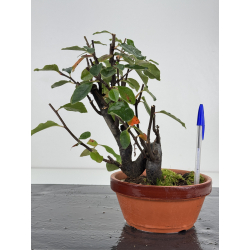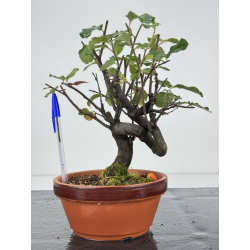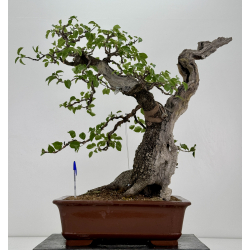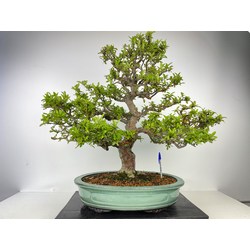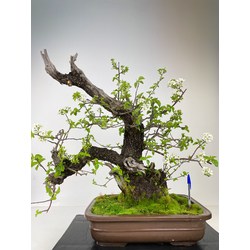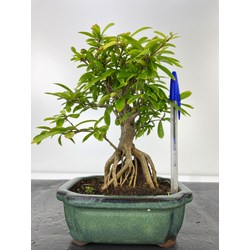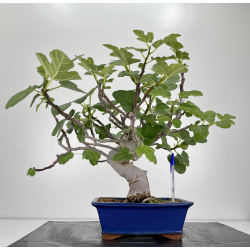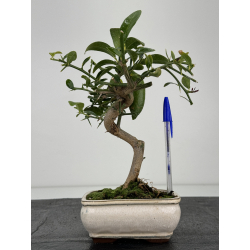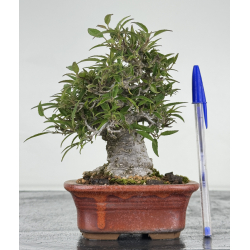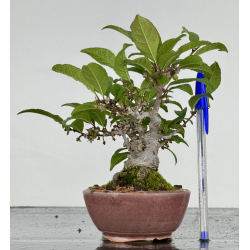FLOWER AND FRUIT
There are bonsais that have flowers with a wide range of colors and forms, sometimes perfumed, that give way to showy fruits, among which it is worth mentioning the splendid specimens of prunos, styrax, apple trees, pomegranate trees and other fruit trees; all of them and many more, you can find them in Laos Garden.
When acquiring a bonsai of this category, you have to take into account that although we are able to reduce the size of the leaf by means of bonsai techniques, this does not happen with its flowers and fruits, since they will always have the size that in a natural way they would produce in the nature; that is why it is very important to think about the final size that your tree will have at the time of forming it, so that its flowers and fruits have a correct proportion with the general aesthetics of the tree.
If the bonsai is small in size, usually wild varieties are used, which in themselves have a reduced fruit and bushy habit, such as celastrus, dwarf pomegranates, chaenomeles and most of the varieties that produce small berries, such as cotoneaster and pyracanthas.
They are usually very resistant species that adapt perfectly to pot culture, although the pot should be a little deeper than the rest of the bonsai, so that they do not lack water and nutrients and can better develop their fruits, which once ripe will give a touch of color to your collection.
You can make bonsai of any fruit tree that adapts to your climate, for example, citrus (fortunella, kumquat, orange, lemon, etc) are perfect for Mediterranean climates. However, others such as mulberry, plum, cherry and pear trees are better suited to continental climates.
Very appreciated for their abundant flowering, not so much for the fruit, are azaleas and camellias, which need a more acid substrate than the rest, so you must take it into account when transplanting, the best is a mixture containing kanuma, a Japanese soil that you can buy in our substrates section.





